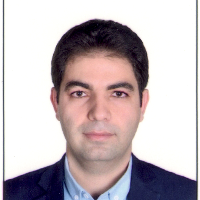Providing an Integrated Descriptor Based on Spatial and Geometric Properties for Three-Dimensional Point Cloud Matching
Reconstruction of 3D models and their use in photogrammetry and remote sensing has been considered as the most important and challenging topics in recent years. With the development of laser scanner technology and obtaining spatial data of the environment and objects, the use of this technology has increased nowadays. This technology extracts points from the external surfaces of the environment or objects in high volume, in a short time, which is called point cloud.
Due to laser scanners’ easy placement, point clouds are usually taken from different angles, so they define in the different coordinate systems, which must be unified to give a complete 3d view of the object. The process is considered as “registration”.
For this purpose, first, the corresponding pairs of points in each point cloud must be determined and then they must be matched correctly.after all a three-dimensional model is created.
Finding the best pair of corresponding points in the Point clouds as well as estimating the optimal error metric and the displacement between pairs of corresponding points is one of the most important and challenging steps of three-dimensional reconstruction.
Three-dimensional descriptors are one of the most suitable tools for determining the corresponding pairs of points in Point cloud. These descriptors create a set of information for every single point to determine the corresponding points in each Point cloud. Defining a three-dimensional descriptor whose computation complexity is low but its descriptive is high, can help to find the correct pair of points for 3d registration and modeling.
The main purpose of the present study is to define a strong three-dimensional descriptor to find the best corresponding pair of points to reconstruct the three-dimensional model.
The descriptor proposed in this study consists of two single local three-dimensional descriptors based on the spatial and geometric properties of the Point cloud, which combine to form a strong descriptor to determine corresponding points in the Point cloud.
Laser scanners extract a large volume of points from surfaces in a short period of time, which due to the reflection of laser beams, Point cloud may contain noise and mistakes. In the process of analyzing and using the data, these mistakes cause problems and should be removed in the pre-processing phase. To define the desired descriptor, in the pre-processing phase the Point cloud gets ready to extract the required properties.
The Statistical removal filter method is used to remove the noise and the voxel grid filter method is used to improve the speed of future preprocessing.
Each point in the neighborhood of Query Point provides a lot of that can be used to create the desired descriptor.
In the present study, by determining the appropriate neighborhood radius and Nearest Neighbor Search (NNS) method, using the k-dimensional tree, correct and efficient neighborhoods are determined for each point.
In the first step, a spatial descriptor is formed for each point. This descriptor is defined in the form of a histogram based on two distances for the point in its neighborhood. In the second step, the angles of the normal vectors of the Point cloud in different states are used to create a descriptor based on geometric information. In this research, two features called and have been used, which for each descriptor is formed in the form of a histogram. Then the spatial descriptor is combined with each of the descriptors based on the geometric feature and forms two desired descriptors.
To ensure the accuracy of the matching process based on the proposed descriptor, by assigning a suitable threshold for the basis of the distance between the Query point and its neighborhood, with the corresponding point of the Query point and its neighborhood in the second Point Cloud, incorrect correspondences are detected and removed. Next, the remained correct corresponding pairs of points are used to reconstruct the three-dimensional model.
In this research, two sets of Point cloud have been used to evaluate the proposed process. These two data sets are obtained in such a way that in the first data set the perspective and angle of view and in the second data set the position and arrangement of objects are changed.
By forming descriptors based on spatial and geometric features in different neighborhood radii and then forming a proposed combination descriptor based on what has been mentioned, it can be considered that combining the geometric descriptors with spatial descriptors, in cases where The two datasets have less relative overlap or more relative rotation than each other, in contrast to the position shift, leading to improved descriptor performance and increased matching accuracy.
Considering the results obtained from the comparison of the proposed descriptors, it can be said that because of the existence of two different radii in each part of descriptors based on spatial and geometric relations in the proposed descriptors, it turns out that the required descriptor is high quality.
On the other hand, the properties used in these descriptors are also resistant to changing the position of objects and have high efficiency in mentioned category. Also, the process of identifying and eliminating incorrect correspondences improves the matching process and increases the matching percentage of similar points up to 25% in the study data set.
The results of comparing the set of Point Cloud studied using the proposed descriptor indicate that this descriptor is more efficient in cases where two data sets rotate relative to each other, compared to cases where the location of the data pair has changed relative to each other. And the accuracy of the comparison obtained from the proposed method, in this case, increases compared to other data pair placement modes.
-
An Integrated Satellite Stereo Image Registration Method Based on KAZE, VFC and TPS Algorithms
A. Mohsenifar*, A. Sedaghat, A. Mohammadzadeh
Journal of Geomatics Science and Technology,


